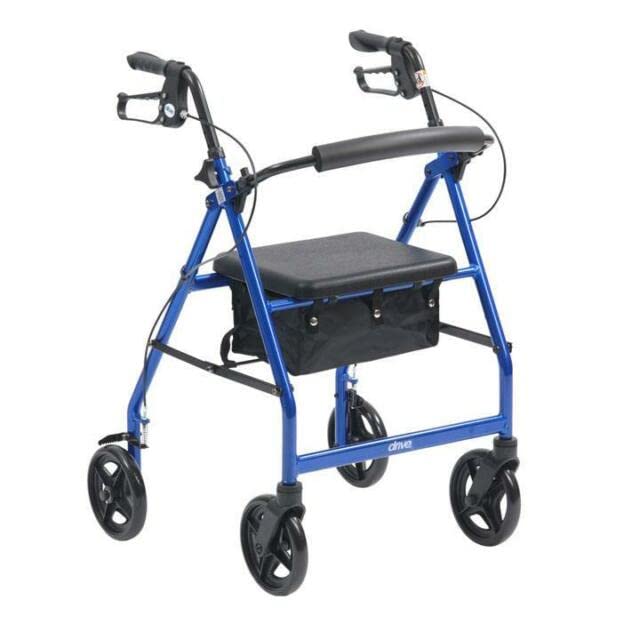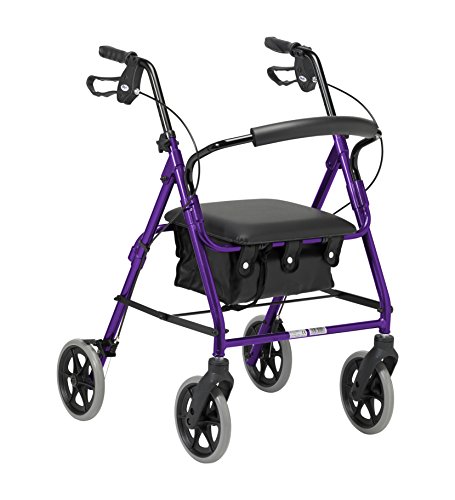The Top 5 Reasons People Win In The Walking Rollator Industry
Page information
Author Eva Swett Date 24-11-13 16:12 Views 4 Comments 0Content
 What Is a Walking rollator scooter?
What Is a Walking rollator scooter?A walking rollator is used to assist people who have difficulty walking. This could be due to chronic health conditions that affect balance and gait.
 Rollators usually have large wheels that can be used on a variety of terrains. Rollators are built with seats that allow the user to stop and rest whenever needed.
Rollators usually have large wheels that can be used on a variety of terrains. Rollators are built with seats that allow the user to stop and rest whenever needed.Mobility Aids
A walking rollator helps people move around and navigate their surroundings. The walker can improve the stability and mobility of people suffering from ailments such as arthritis or multiple sclerosis. It allows users to remove the weight off their legs, thus reducing discomfort and weakened.
A walker, also known as a rollator, is made of a ultra lightweight rollator walker (marvelvsdc.faith) metal frame, which is adjusted in height to accommodate varying user needs. The majority of models feature a padded backrest and seat for resting and an accessory basket to store personal items. Certain models have a brake that is activated by pressing down the pedal. This is helpful in areas with steep terrain or hills.
Some rollators are available with pneumatic wheels. These are ideal for outdoor use because they provide superior suspension, making traveling more comfortable. They also reduce strain on the legs. They also can withstand rough terrain and are more maneuverable than the standard wheels for walker. They are also quieter and have a larger weight capacity than regular walkers.
Many mobility aids are designed with customisation and accessories in mind, so they can be customized to meet the specific requirements of every user. Cup holders, tray holders for walker and cane/umbrella holders are all popular choices. Make sure that the attachments you choose do not interfere with the folding mechanism, and they can be removed if not needed.
A walker is the ideal option if you're in good balance, but need more support for your arms. A walker that is rolling with four wheels provides greater mobility and is suitable for individuals who want to stand for longer durations of time. The U-Step II is a unique mobility device that projects a laser in front of the user. This helps to initiate motion and decrease freezing gait episodes in Parkinson's patients. The UpWalker posture walker helps promote an upright posture, helping to relieve back and neck pain. It features an ergonomic grip and adjustable handgrips.
Stability
Rollators are constructed with strong frames and large wheels to offer stability and reduce the chance of accidents and falls while walking. These mobility aids also distribute weight evenly, minimizing stress on joints such as the hips, knees, and ankles. This is particularly useful for people recovering from surgery or an injury, as it lessens the impact physical activity puts on their healing muscles and joint.
Rollators come in a variety of sizes, shapes and styles. Some models are lightweight and easy to move, whereas others feature more robust frames made of aluminum or steel to support a larger user base. They are also available with features like storage baskets as well as locking brakes and padded seats for additional comfort. Many manufacturers sell their products online and through healthcare retailers. They usually offer FSA and HSA-approved products that are eligible for tax-free purchases from these accounts.
A rollator is an excellent choice for people who want to remain independent but need help in balance and stability. It can be used indoors or out and is easily adjusted to work on uneven surfaces or stairs. Mobility aids can be more comfortable than walkers since they don't have a fixed chair and can be adjusted to an individual's requirements.
It is essential to know how to use a rolling walker properly to get the most out of it. The first step is to determine the right height for the handlebars and seat. Adjust the height so that you stand straight and place your feet directly under the frame. This will allow you evenly distribute your weight when you move forward. Then, place your hands on the handles and lean forward, gripping them to ensure you are the balance. Once you feel stable, slowly release the brakes and begin walking the way you normally do.
One study revealed that using a rollator reduced EMG activity in the lower limb muscles during the gait stance phase. The trunk-sway, however remained unchanged. The researchers suggest that this is because stabilizing forces are created by the upper body instead of the lower limbs, when walking using the rollator.
Safety
A rollator mobility walker offers much more mobility than a standard walker. The rolling wheels of a walking roller can move over different surfaces without any effort. Users can now take walks outside or run through the city without needing an aid for mobility.
The wheels of a walking rollator are also designed to cope with rougher terrain. A regular walker could have trouble with cracks or dips in the sidewalk. However the rolling walker can overcome these difficulties.
While a walker is a great way to increase mobility for older adults, it's essential that they make time to practice using their aids to mobility prior to leaving for. This is particularly important for new users who aren't familiar with the roll-in walker, and it's a good idea to encourage anyone to spend a few minutes inside to get comfortable with the device prior to going outdoors.
It's important to make sure that the user is aware of how to operate the brakes and that they are able to engage them quickly. Some rolling walkers come with brakes that are activated by pressing down on the frame. Other models come with hand brakes that are similar to those found on bicycles. Whatever brake system they choose to use, it is crucial that the brakes are engaged while they are seated on their rollator as this will stop it from moving away while in use.
Lastly, it's an excellent idea for older adults to apply reflective stickers to their mobility aids or wear brightly colored clothing when they are using them in winter. This makes them more visible on streets and in parking spaces. It can also increase their comfort.
Comfort
Walkers and rollators can be used for a long period of time, making the user's comfort a crucial factor. Both kinds of mobility aids can decrease the risk of falls which can be particularly risky for older adults who are prone to back and hip pain.
The grips on rollators and walkers are designed to reduce hand discomfort and provide support for your hands. A majority of walker models have plastic handles, but soft materials and foam are more comfortable. They absorb shocks from repeated use. Look into ergonomically padded armrests that improve support.
The seat height on rollators and walkers is an important factor in comfort. A walker or rollator with brakes that's too low causes you to stoop over excessively which puts stress on your back and neck. Conversely, a walker or rollator that is too high causes you to lift your feet off the ground, which could cause unnecessary stress on your back and ankles.
Many manufacturers offer a wide range of accessories for rollators for tall person and walkers such as cup holders, trays, storage baskets, and more. These accessories can help keep your walker or rollator clean, organized and ready to use. These add-ons can be a great convenience because they let you transport items around without stopping or having to move things around in your hands.
There are a variety of sizes and materials available for both walker and rollerator wheels, based on your requirements and preferences. Rubber wheels are a great option due to their the durability, flexibility and grip. Polyurethane is also a popular option, since it has the same characteristics as rubber wheels, but at a lower price.
You can choose from the three-wheel and four-wheel models if you have to move around the house. The three-wheeled model can be easier to maneuver and is more portable than its four-wheeled equivalent, but it lacks seats that can be used for longer journeys. The model with four wheels is more stable than the three-wheeled model, but can be difficult to navigate narrow spaces or hallways. A seat can be added to either the three-wheeled or four-wheeled model for added comfort.
Comments 0
There are no registered comments.
